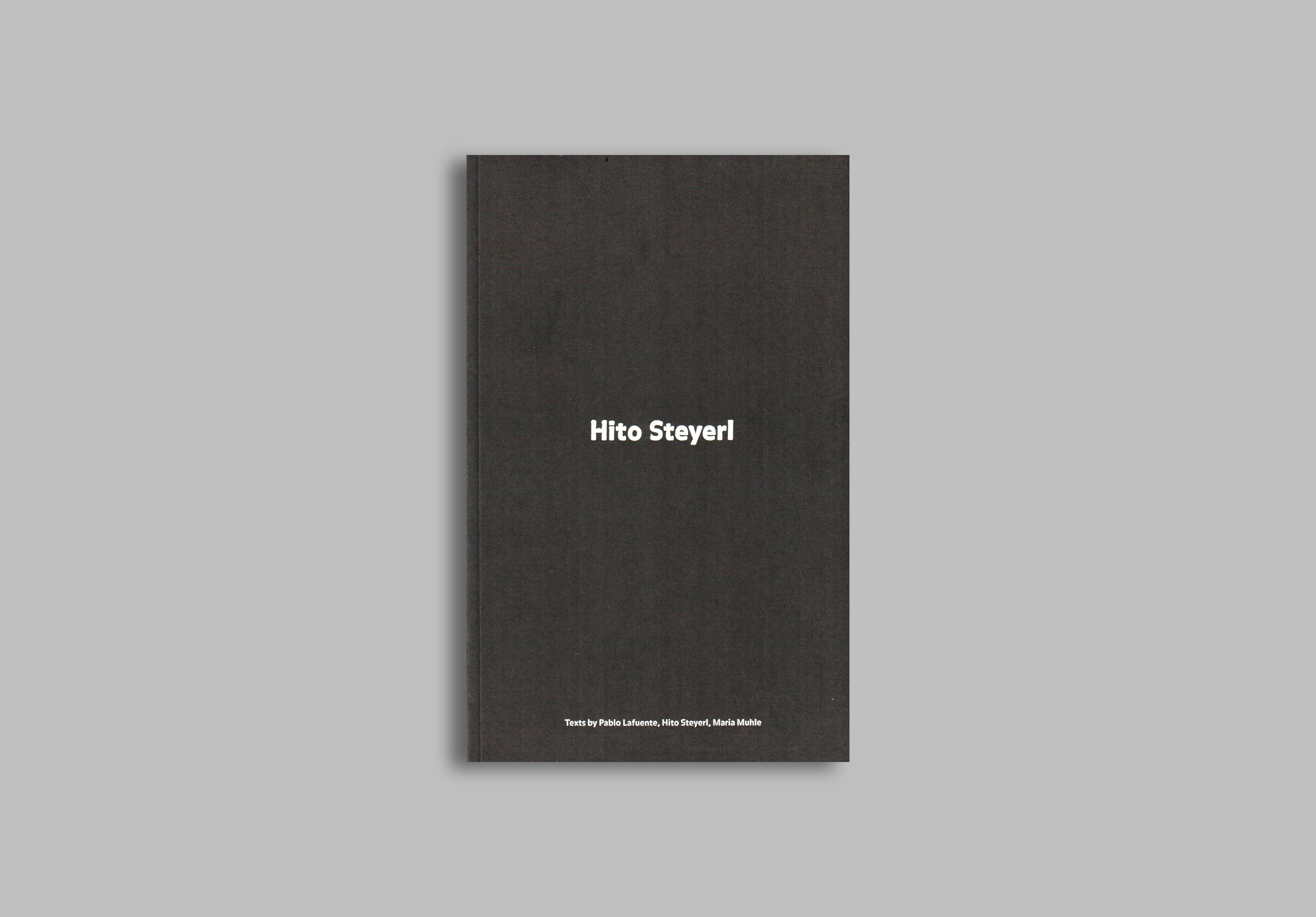

Hito Steyerl
The catalogue experiment with the catalogue essay as form. The texts are more or lesslinked to each other, the authors were asked to relate to the previous text; forming a chainreaction. Pablo Lafuente was invited to write the first text, entitled “Two Ways to Read Film (and its Politics): Hito Steyerl, Sigmund Freud and Aristotle”. Lafuente enters intothe relationship between the heroes of theatre and film and the viewer, and examines therelationship between identification and theatre, between fiction and truth in Steyerl’s movies;where authenticity and biographical details interchange in a role play of sorts, between theone watching the movie and the spectator within the movie itself. His point is that while thereis nothing real in Steyerl’s movies, the real is always present in any given practice and thatthis practice may influence reality. Steyerl has answered with the manifesto “A Thing LikeYou and Me”. Here all heroes are done away with and the emancipatory desire to becomea subject is pushed aside to favour the embracing of the object. Why not contemplatebecoming an object? To be free of subjectivity’s demand for heroics and the illusion of thepossibility of freedom, and become a thing?The third author, Maria Muhle, was given the task to hitch onto the two previous texts, enterinto a critical dialogue and expand the perspective. Muhle answered with the text “Notes onDocumentary Realism”. Here Muhle looks at the historical realism seen from a literary andart historical perspective, whilst positioning the present day’s critical treatment of realisticdevices in art, as well as in popular culture, in relation to this.The result of this dialogue between the texts can be seen as a subtle and not always directexchange where the works and their meaning are discussed on various levels. The texts’underlying dialogue creates the possibility of a discussion of Steyerl’s project within a widercontext, thus expanding the format of the exhibition.
The catalogue experiment with the catalogue essay as form. The texts are more or lesslinked to each other, the authors were asked to relate to the previous text; forming a chainreaction. Pablo Lafuente was invited to write the first text, entitled “Two Ways to Read Film (and its Politics): Hito Steyerl, Sigmund Freud and Aristotle”. Lafuente enters intothe relationship between the heroes of theatre and film and the viewer, and examines therelationship between identification and theatre, between fiction and truth in Steyerl’s movies;where authenticity and biographical details interchange in a role play of sorts, between theone watching the movie and the spectator within the movie itself. His point is that while thereis nothing real in Steyerl’s movies, the real is always present in any given practice and thatthis practice may influence reality. Steyerl has answered with the manifesto “A Thing LikeYou and Me”. Here all heroes are done away with and the emancipatory desire to becomea subject is pushed aside to favour the embracing of the object. Why not contemplatebecoming an object? To be free of subjectivity’s demand for heroics and the illusion of thepossibility of freedom, and become a thing?The third author, Maria Muhle, was given the task to hitch onto the two previous texts, enterinto a critical dialogue and expand the perspective. Muhle answered with the text “Notes onDocumentary Realism”. Here Muhle looks at the historical realism seen from a literary andart historical perspective, whilst positioning the present day’s critical treatment of realisticdevices in art, as well as in popular culture, in relation to this.The result of this dialogue between the texts can be seen as a subtle and not always directexchange where the works and their meaning are discussed on various levels. The texts’underlying dialogue creates the possibility of a discussion of Steyerl’s project within a widercontext, thus expanding the format of the exhibition.
24 x 15.4 cm, 93 pages
Film as essayistic collage is central to Steyerl’s works. She combines own recordings withscenes from Hollywood movies and documentary material in various works, operating withindifferent rhythms and time intervals. Her films criticize an understanding of the documentaryimage as a bearer of history and authenticity and as an object of empathy and identification.In a time where imagery travels, is being reinterpreted, used and distributed more quickly than ever before, the image as document has lost its apparent authority as a witness. Simultaneously the documentation and communication of moments and situations hasbecome common activity due to advances in technology. The image has itself becomea restless and transitory object, ready for downloading, ripping, copying and recycling. Steyerl’s works are based on experimenting with the documentary as form within specificgeographical, political and thematic limitations. She turns the instability of the images into an advantage and makes reinterpretable objects of them, thus discussing the political dimension of the image in our surroundings. Steyerl does not hide the director’s presence,she frequently stages herself in her films as an object among objects.
Film as essayistic collage is central to Steyerl’s works. She combines own recordings withscenes from Hollywood movies and documentary material in various works, operating withindifferent rhythms and time intervals. Her films criticize an understanding of the documentaryimage as a bearer of history and authenticity and as an object of empathy and identification.In a time where imagery travels, is being reinterpreted, used and distributed more quickly than ever before, the image as document has lost its apparent authority as a witness. Simultaneously the documentation and communication of moments and situations hasbecome common activity due to advances in technology. The image has itself becomea restless and transitory object, ready for downloading, ripping, copying and recycling. Steyerl’s works are based on experimenting with the documentary as form within specificgeographical, political and thematic limitations. She turns the instability of the images into an advantage and makes reinterpretable objects of them, thus discussing the political dimension of the image in our surroundings. Steyerl does not hide the director’s presence,she frequently stages herself in her films as an object among objects.
Published by Henie Onstad Art Center 2010.
Distributed by Torpedo Press 2010
Distributed by Torpedo Press 2010